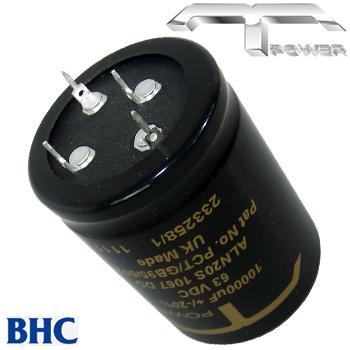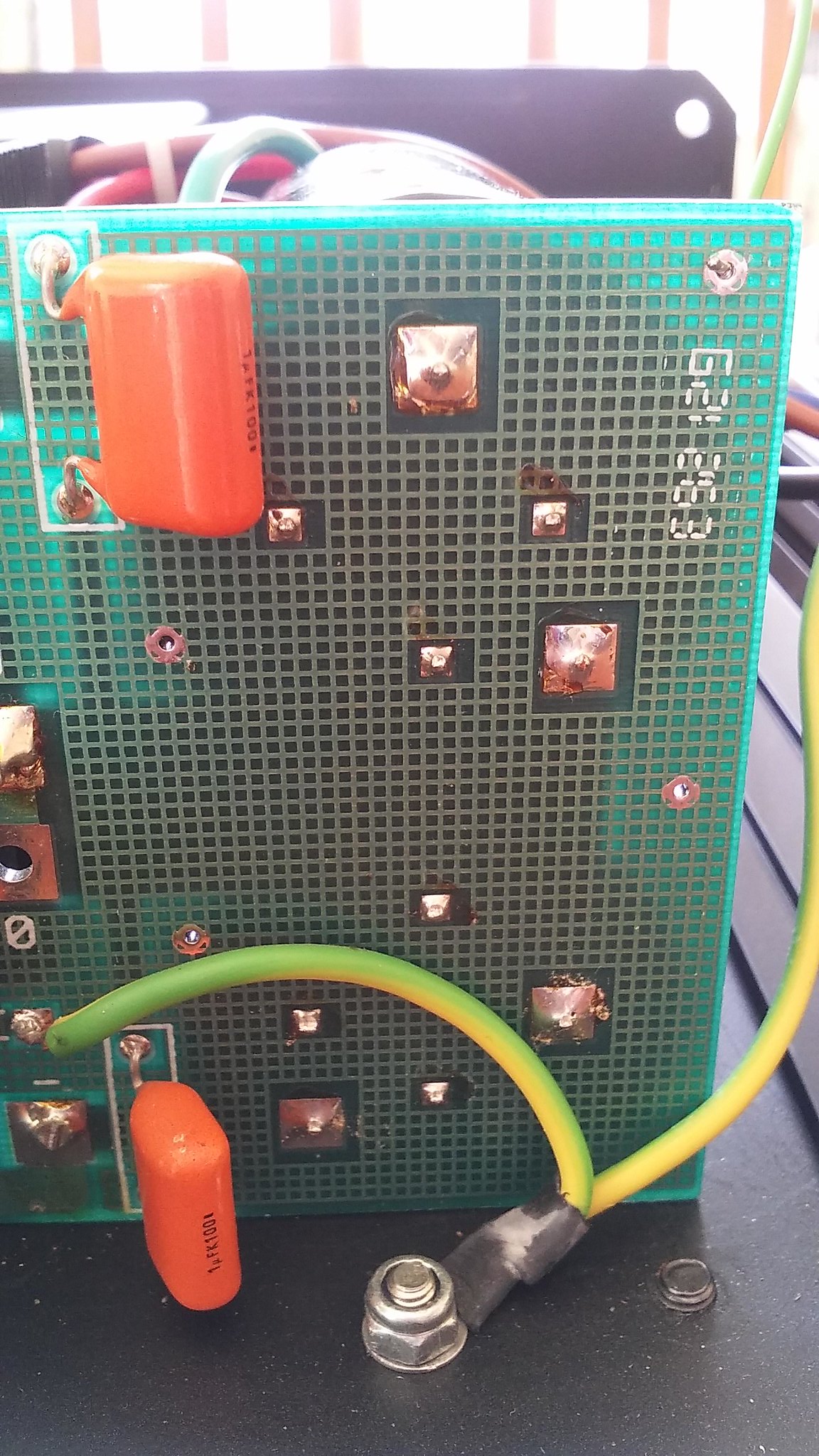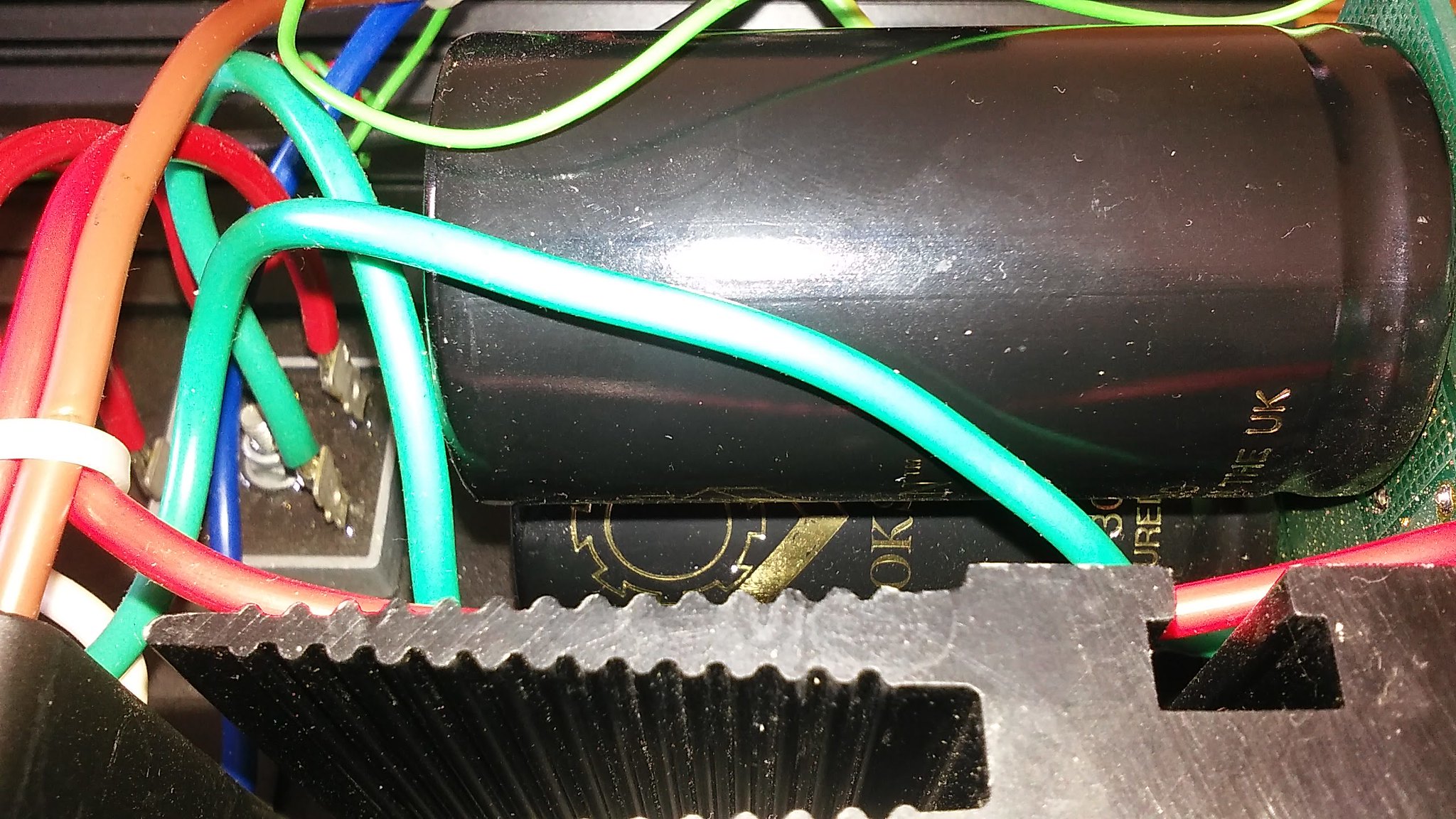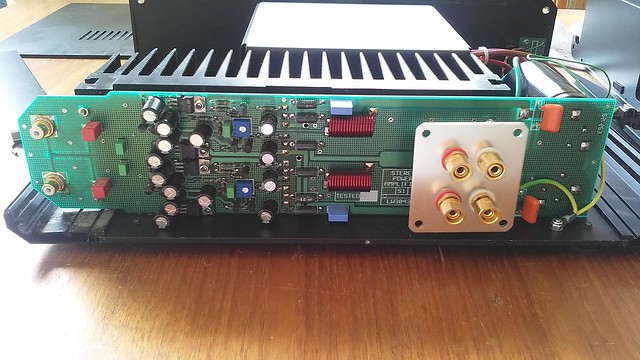Hi,
My Amp has been playing up after not being used for a while. I've replaced all the small capacitors which were leaking and the mosfets which has mostly fixed the problem, however I still have a problem while the amp warms up, so I suspect it's the 2 big capacitors which need replacing next.
The amp is a Roksan (20+ years old) and they didn't have any indication of what they were, however Roksan have kindly advised me that the capacitors are 10000mfd 63v (I suspect mfd means micro farad rather than millifarad).
However, the capacitors have 4 terminals.
I'm therefore looking for a couple of 10000 mfd 63v 4 terminal solder terminal caps.
Can anyone point me in the right direction for a replacement. Roksan have advised me that the original caps were specially made for them which is slightly worrying.
Thanks,
Jeddy
My Amp has been playing up after not being used for a while. I've replaced all the small capacitors which were leaking and the mosfets which has mostly fixed the problem, however I still have a problem while the amp warms up, so I suspect it's the 2 big capacitors which need replacing next.
The amp is a Roksan (20+ years old) and they didn't have any indication of what they were, however Roksan have kindly advised me that the capacitors are 10000mfd 63v (I suspect mfd means micro farad rather than millifarad).
However, the capacitors have 4 terminals.
I'm therefore looking for a couple of 10000 mfd 63v 4 terminal solder terminal caps.
Can anyone point me in the right direction for a replacement. Roksan have advised me that the original caps were specially made for them which is slightly worrying.
Thanks,
Jeddy





